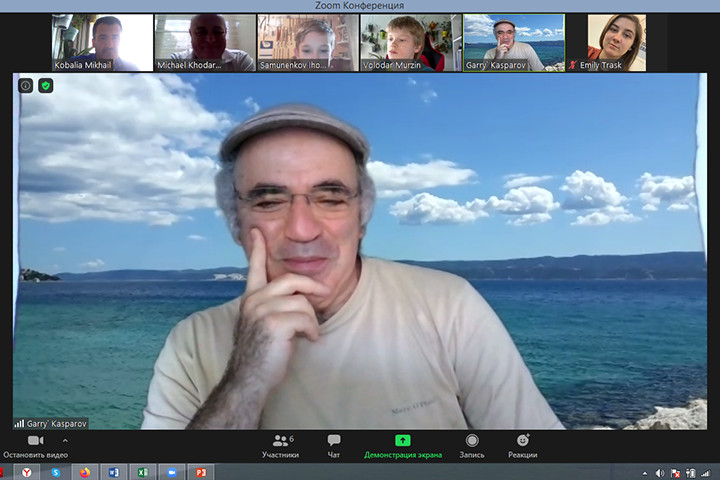


2020 has come with many challenges, but chess players must always be ready to rise up to them! Despite the health crisis created by COVID-19, and the lack of in person chess, this cannot, and does not, stop the talented hopefuls in their search for higher chess titles.
The Young Stars Team USA session planned for June 2020 in St. Louis, Missouri – in the same room where the Sinquefield Cup and the U.S. Championships are played, had to be moved. With travel being an impossibility, online was the logical place to stage the session. The camp was spearheaded by Garry Kasparov himself and the students were:

Starting with the top row:
These players, despite their young age, have already represented America in top tiered competitions. Rochelle and Carissa, for example, were part of the U.S. Women’s World Team squad last year, while Christopher Yoo became the youngest player to defeat a 2700 in tournament play with his victory against Le Quang Liem early last year.
Grandmaster Gurevich has been one of the most prolific coaches in the USA and he was able to observe the camp in progress:
“My first time attending the Kasparov Chess Foundation’s camp for talented kids in New York was with my student, Sam Schmakel of Chicago, in 2005. This was the first time that Garry Kasparov and FIDE Senior Trainer Michael Khodarkovsky hosted a training camp to discover American talent. While Kasparov had already retired from professional chess, and was no longer the World Chess Champion, he was very much still the best in the world.”
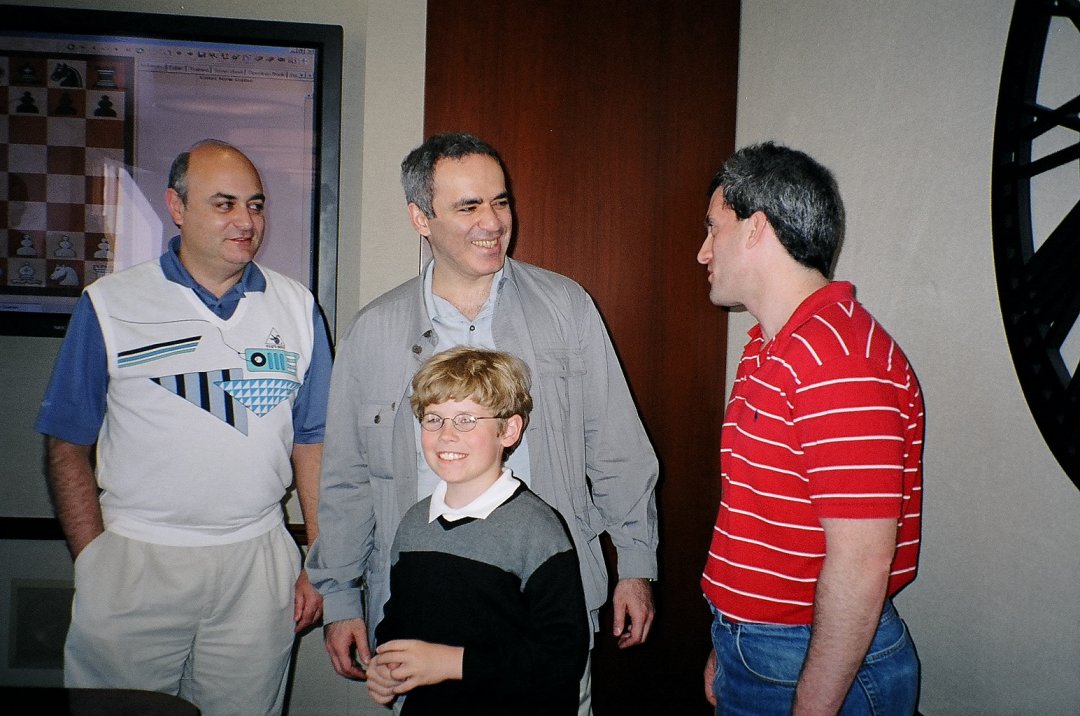
Young Sam Schmakel (middle) in 2005, during the inaugural session of the KCF talent program!
“My impressions at the time were that Kasparov was like an avatar stepping from Olympus to teach these youngsters.
For many years after 2006, while I did not attend the camp, I followed the success of the Young Stars program through the years. I was impressed when in 2011, the Young Stars program became a joint project between KCF and the Saint Louis Chess Club. The program continued to grow and the caliber of students grew exponentially, developing a new wave of U.S. Grandmasters, including Sam Sevian, Kayden Troff, Jeffery Xiong, and others.
At this training, I had my student, Alice Lee, of Minneapolis, who won the World Cadet Championship Under 10 with a score of 10 out of 11, but she was also the lowest rated player in the group at this training session. It seemed to me that the other players were already stars, and it was fantastic to have her learn and be exposed to such a high caliber of players.”
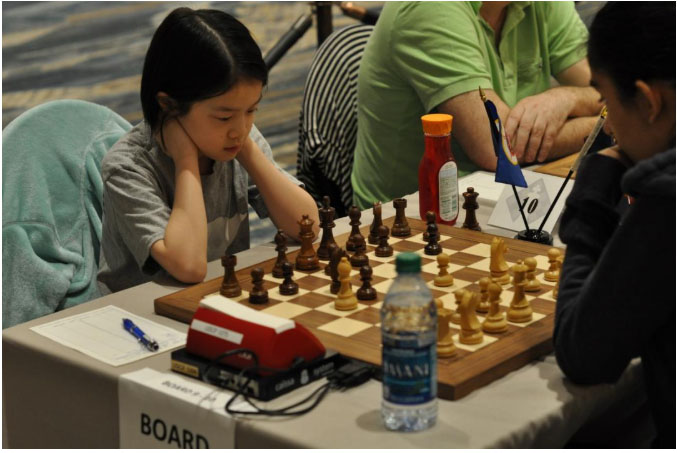
Alice Lee hard at work on the black side of a Rossolimo in the 2019 US Open
A player like Dmitry Gurevich isn’t easily impressed with “just titles”:
What is most important is what can be seen beyond these titles – these are talented, hard working, tenacious chess players, who are showing great promise to become even more successful in the chess world. The level of their discussions during the Zoom training were beyond their years. No matter how complex or nuanced the variations Kasparov presented to them, these students were not phased or star struck. They engaged fully, thoughtfully, and accurately in their responses and answers.
Not all great players make for great teachers, and not all great teachers make for great players. Kasparov is certainly an exceptional World Chess Champion, and he is an exceptional teacher. Perhaps the secret to his success is that he does not have to come down from Mt. Olympus, he lifts his students up to the pinnacle instead.
We thank grandmaster Gurevich for his words and the efforts to help chess talent around the World.
At the end of the session, Michael Khodarkovsky prepared a nifty puzzle. Garry presented it the following way:
“Michael prepared for you a fun study, which was actually given to some Grandmasters to solve during the 1972 Olympiad in Skopje, and it took time until they found a solution. Can you solve it?”

White to play and draw. D. Djaja, 1972
Following the great success of Young Stars Team USA’s zoom session, the Kasparov Chess Foundation resumed the training of the talented Young Stars from Europe. This year’s program was scheduled to coincide with the 2020 Grand Chess Tour leg in Zagreb, as it did last year:
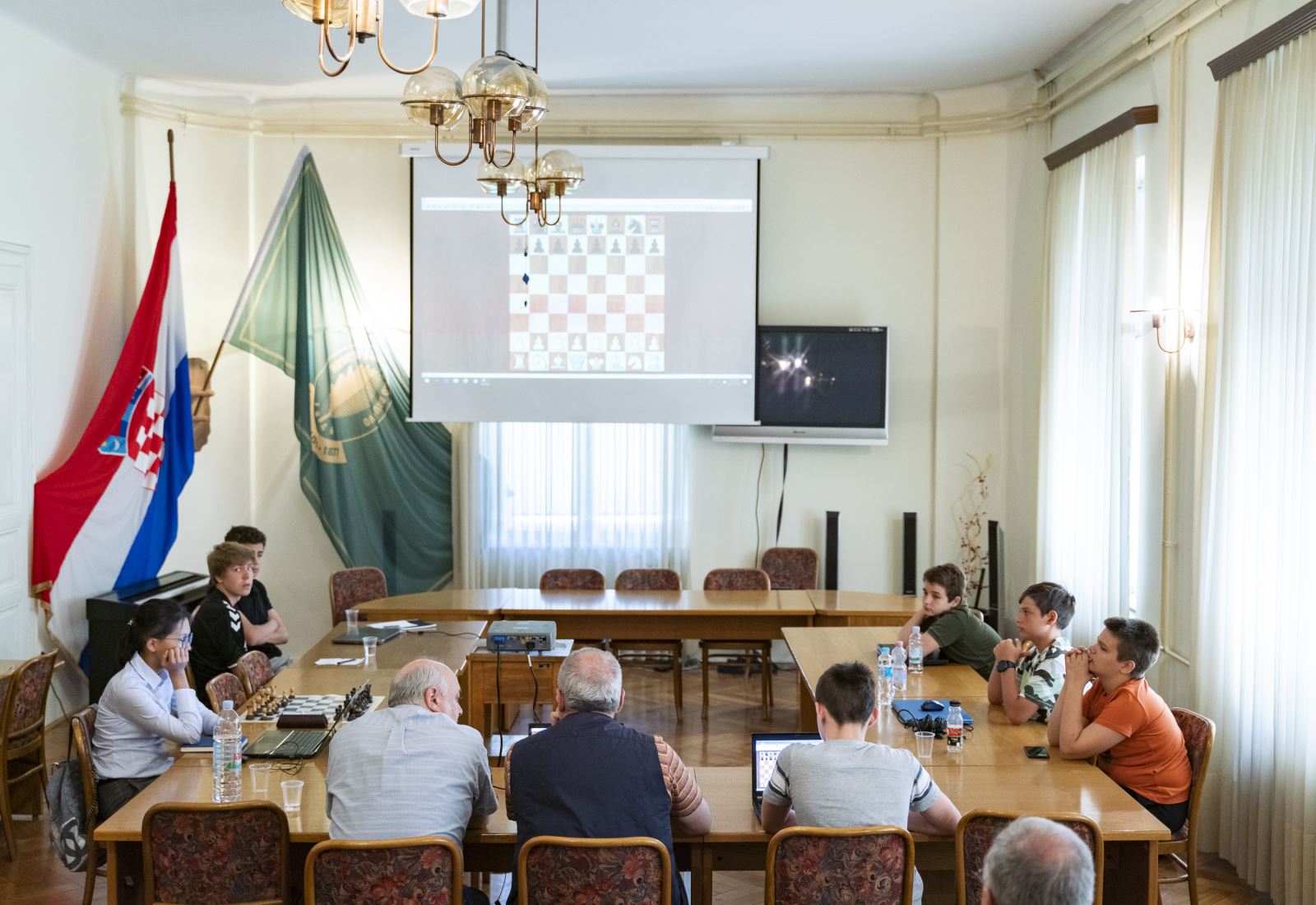
The 2019 Young Stars Summer Training session being held in Zagreb
Due to the global pandemic, it was impossible to hold the session in person. Distance, however, has never kept chess players from working with each other, and the training session was moved to zoom, similar to how the Young Stars – Team USA Camp was held. Garry Kasparov again led the camp, which was not only divided by distance, but also by language:
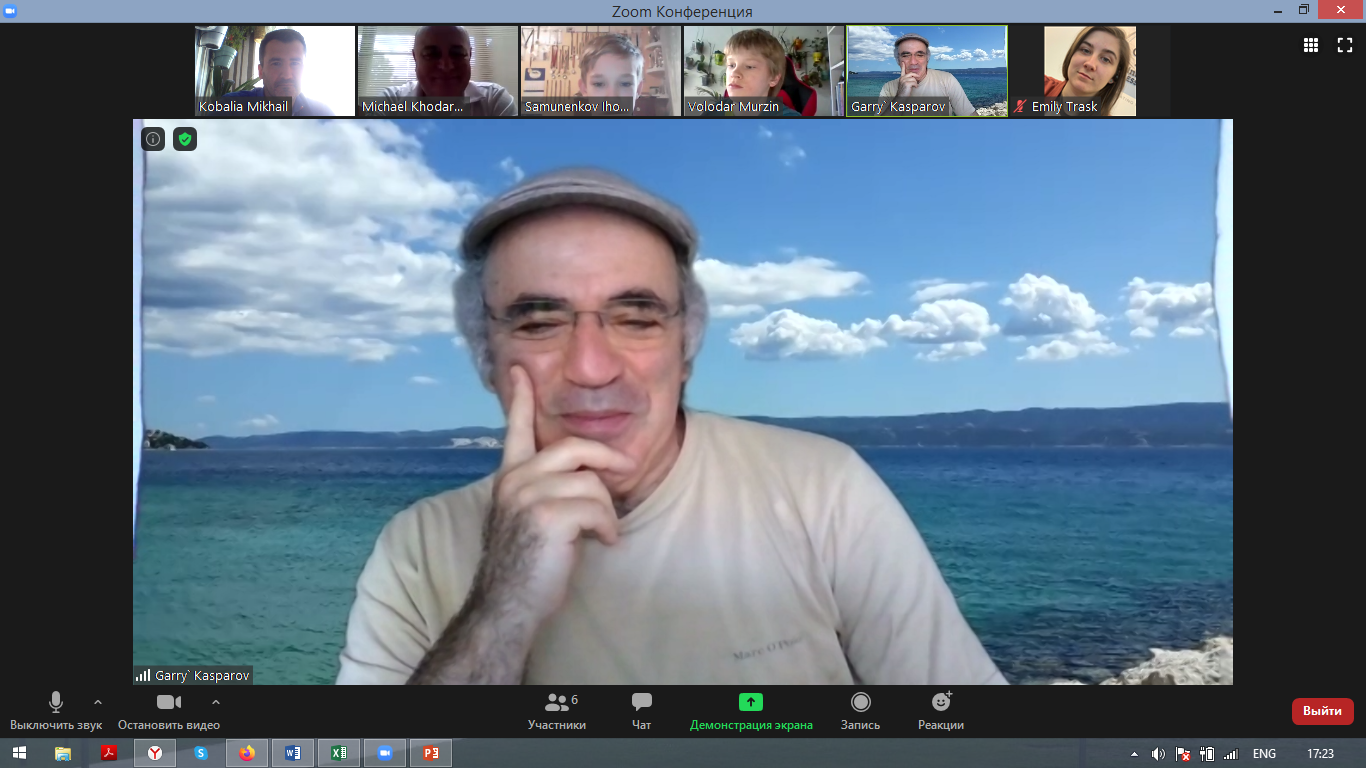
Garry is currently in sunny Croatia at the seaside, and he chose an appropriately warm background!
The first session was held in English. The participants were:
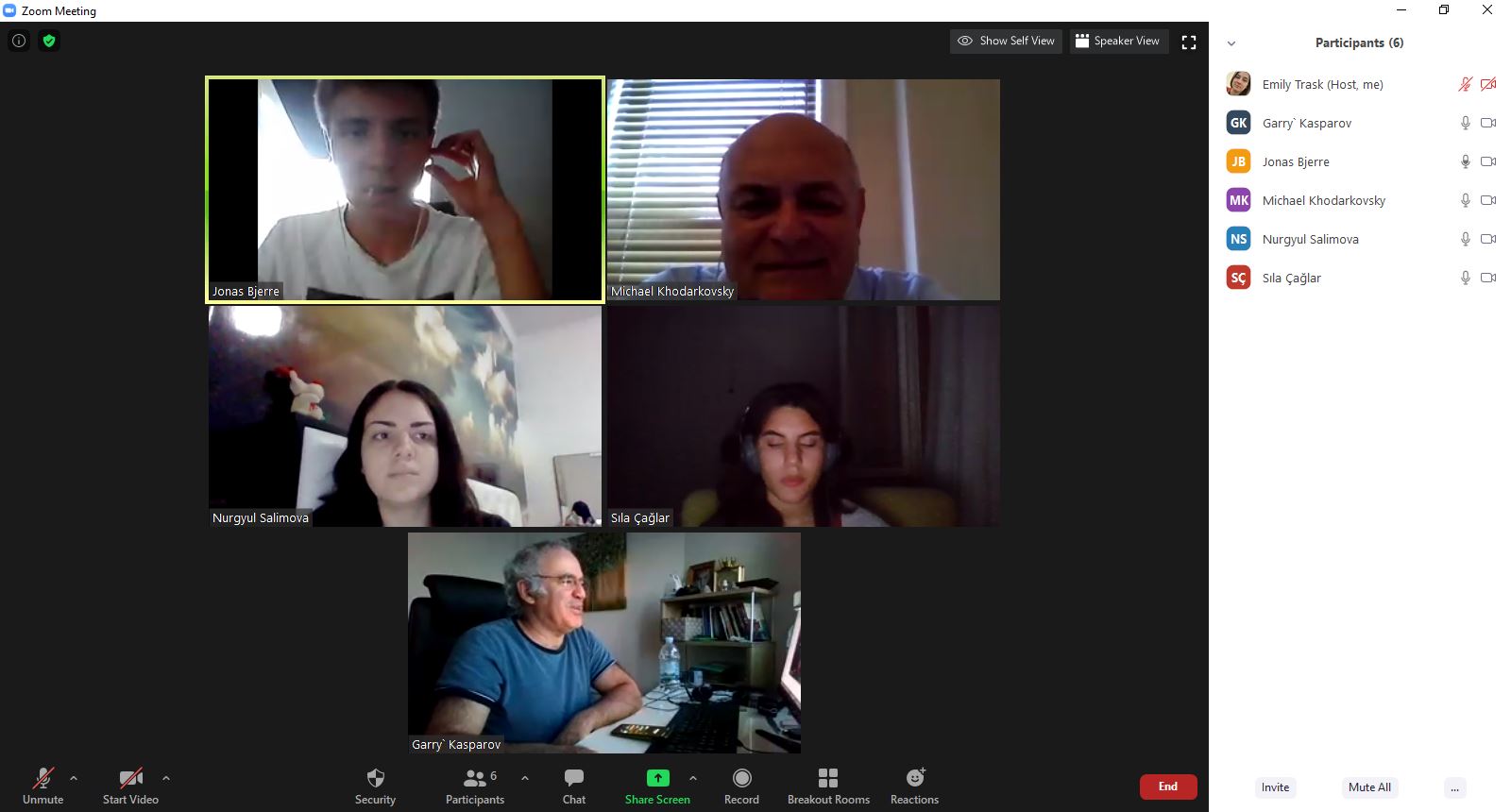
Meanwhile the session that followed was held in Russian, with the players:
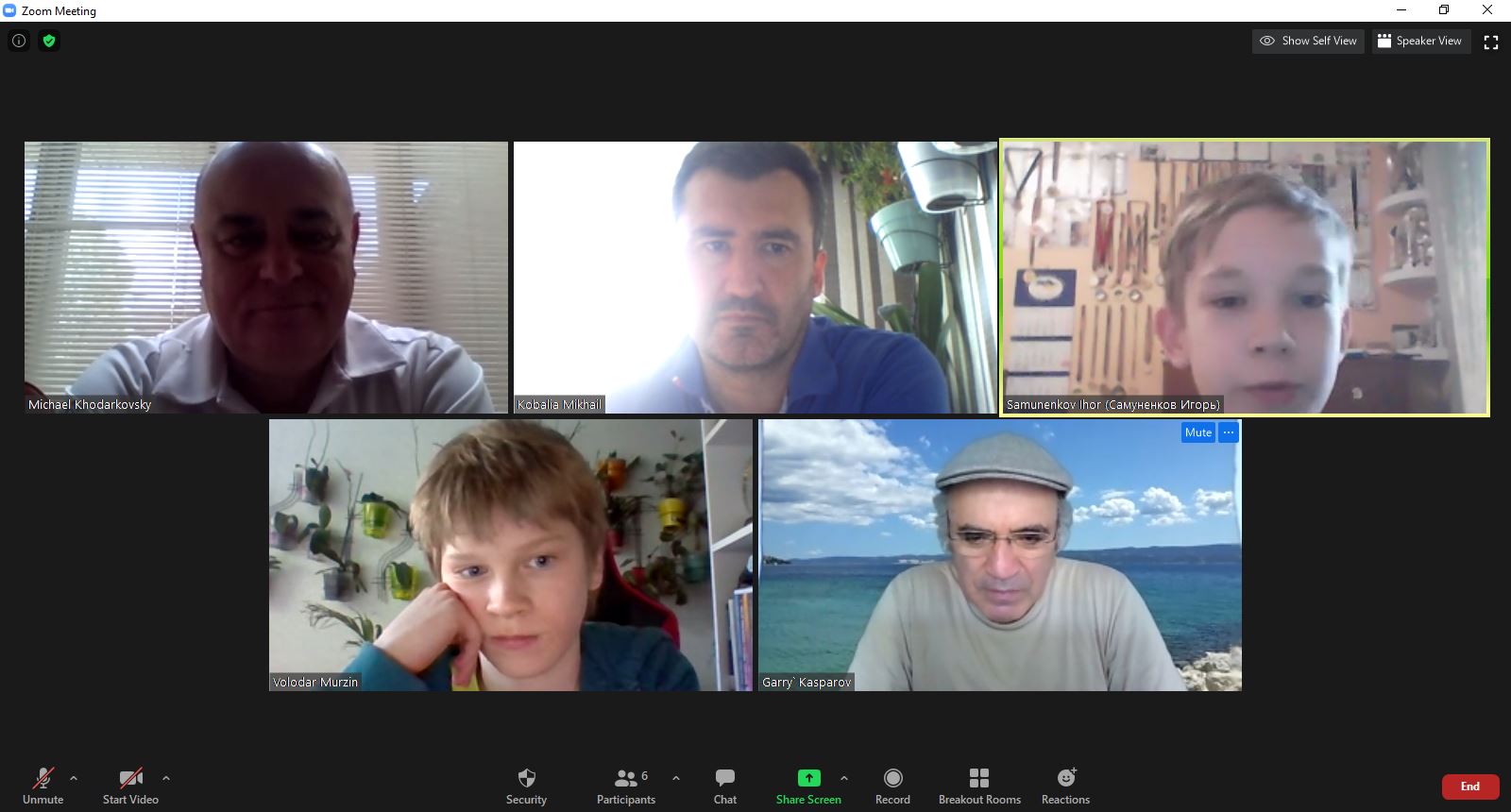
Volodar was very excited after the session:
“Meeting Garry Kimovich, even virtually, you feel a big wave of energy and strength. For me it was a great pleasure to discuss with him my games, hear his ideas and evaluations. It’s been one of the most interesting and memorable sessions. I’m dreaming to meet him in person.”.

Ihor showed his exciting win against former Women’s European Champion GM Thanh Trang Hoang
We also spoke to IM Nurgyul Salimova and asked her about her impressions of the training:
1. What did you feel was unique about working with Kasparov, compared to other coaches?
Kasparov is one of my favorite players of all time; I really like his playing style and he always been an inspiration for me. I was really happy when I received an invitation for this camp in particular!
2. What were some important lessons you took from the camp?
He gave me some important tips for attacking, and he taught me not to watch for material balance but to go for the attack and the initiative.
3. How does a young player like yourself keep active during the pandemic?
I play online regularly and I have online training with my coaches every day. The only missing thing are tournaments, and I really want to start playing soon.
4. What were some of the pluses and minuses from working online?
Of course working in person is always better. However, nowadays I always work online because all my coaches live far away from me!
5. Could you share a game you showed or were shown during the camp?
I showed 6 games but my favorite one is my draw against Gawain Jones played in Gibraltar earlier this year. The most instructive one was my loss against Harshit Raja because in that game Kasparov taught me many new ways of thinking about attacking chess.
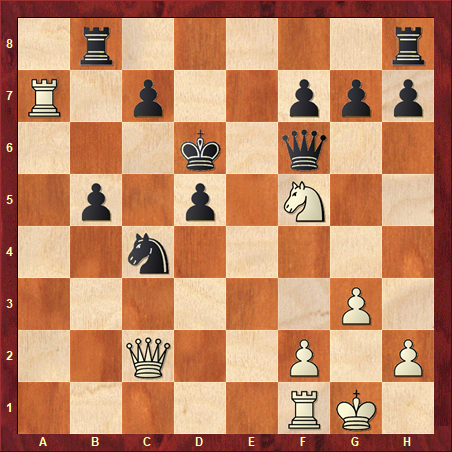
 Meanwhile, here GM Bjerre is showing some of the crazy complications from his first round draw against Ray Robson in the Isle of Man tournament, which secured the Young Star his GM title.
Meanwhile, here GM Bjerre is showing some of the crazy complications from his first round draw against Ray Robson in the Isle of Man tournament, which secured the Young Star his GM title.Life during the pandemic has certainly been tough, and the lack of chess tournaments has seriously impacted the development and growth of many of the talented players trying to succeed in this competitive field. With the internet and the enormous amounts of resources available, like stable conference calls, our young players are certainly using their time in the best possible way.
Young Stars has open admission for talented kids from all over the World to apply to this elite program. Candidates may apply by submitting the application found here: KCF YoungStars Application. The program is open for talented players that are nine (9) years of age on January 1, 2020, and not older than thirteen (13) years of age on January 1, 2020.
Send the full applications to: youngstars@kasparovchessfoundation.org
Republished with kind permission of the Kasparov Chess Foundation